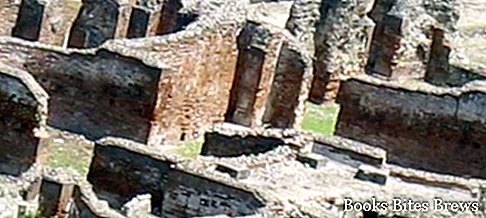What to see in Cuma, an archaeological site located in the metropolitan city of Naples, within the volcanic area of Campi Flegrei and in the territory of Bacoli and Pozzuoli.
Tourist information
Among the various hypotheses made by scholars on the origins of Cuma, the most reliable is that according to which it is believed that the city was founded in the eighth century BC. by the inhabitants of nearby Ischia, which at that time was called Pithckoussai.
At first Cuma managed to dominate the surrounding area, extending its boundaries on the Phlegraean and Neapolitan gulfs and managing to stop the advance of the Etruscans, until in 421 BC. it was conquered by the Samnites.
With the choice of Puteoli as the main port of Rome, the decline of Cuma began, which later ended up being remembered exclusively as a peaceful, solitary and above all place of worship, thanks to the presence of the Sibyl cave, located near the Temple of Apollo.
What see
It is a monument totally excavated in the tuff, fascinating for the mysterious atmosphere from which it is surrounded, in fact, according to what narrated by Virgil in the Aeneid, it seems that the legendary priestess of Apollo lived precisely in that place, where she received many visitors who they wanted to know their future.
The dromos, which is a very long trapezoidal corridor, illuminated by six lateral openings, leads to an arched room, where another, more secluded, overlooks it.
According to recent research, it seems that the complex also had a defensive function related to the underlying port area.
The temple of Jupiter is a Greek temple dating back to the fifth century BC, of which only the layout of the podium remains, in addition to the baptistery of the Christian basilica in which it had subsequently been transformed.
On the lower terrace is the temple of Apollo which, according to legend, was built by the mythical Daedalus.




